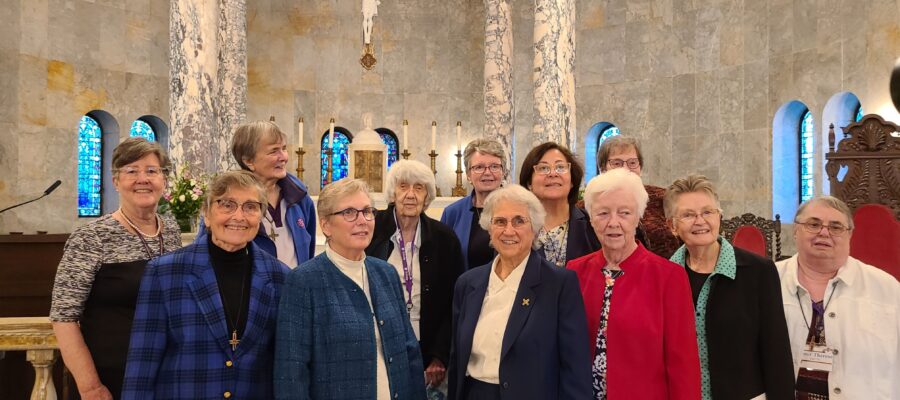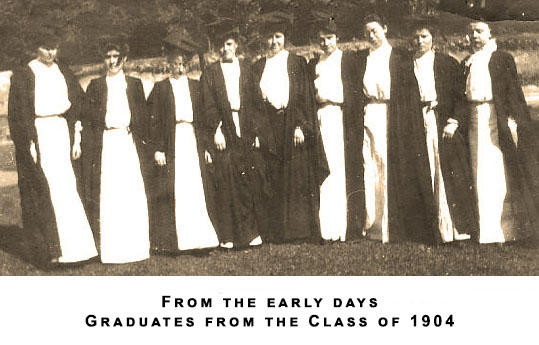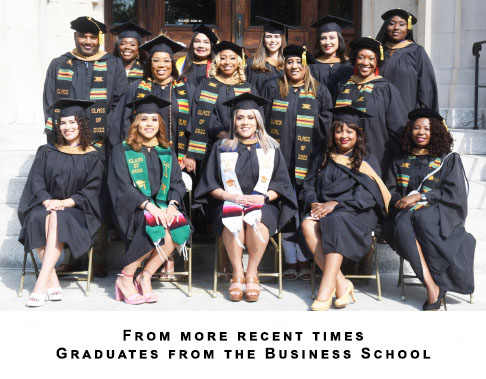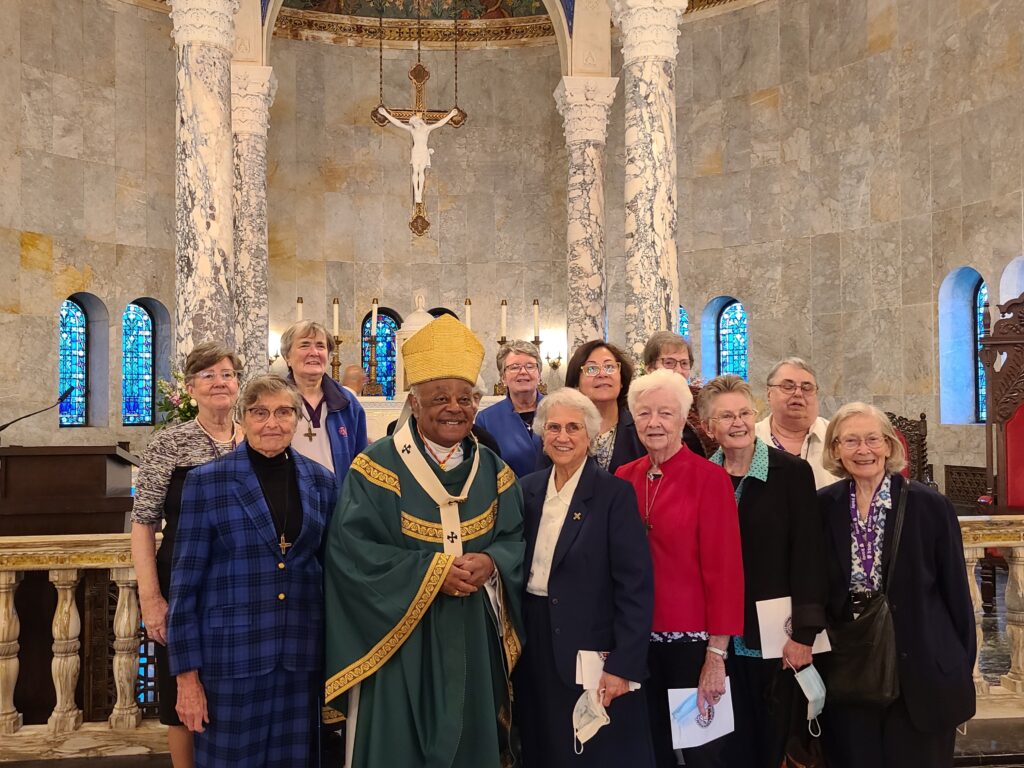
Spotlight On: Trinity at 125 – Moving Forward in the 21st Century
by Patricia McQuire, President of Trinity Washington University.
This article was originally published in the SNDdeN US November eNewsletter and on their website.
Some priests on the Catholic University faculty raised serious objections to the plan for a women’s college less than a mile from their campus. The Sisters persisted with their vision and ultimately Cardinal James Gibbons sent a letter to Sister Julia endorsing the project.
With considerable courage but little money, Sisters Julia and Mary Euphrasia raised funds, purchased land, organized curricula and faculty, and oversaw the construction of the great building that would be known as Main Hall. On November 6, 1900, nineteen young women arrived on the new campus to begin their academic journeys as the pioneer Class of 1904.
Across the next seven decades, Trinity thrived as a relatively small, elite liberal arts college. Alumnae of Trinity rose to prominence as leaders in medicine, law, education, journalism, business and politics, with notable “first” women including Speaker of the House Nancy Pelosi ’62, Hearst Chair Cathleen Black ’66, Kansas Governor and Secretary of Health and Human Services Kathleen Sebelius ’70, and the Chief Justice of the Puerto Rico Supreme Court Liana Fiol Matta ’78.

Starting in the late 1960’s, co-education was sweeping through higher education. The Title IX law that mandated equality of opportunity for women in education made the men’s institutions increasingly attractive to young women. There were fewer sisters in education ministries as the Vatican II Council led to other ministry options. All of these factors impacted Trinity as it planned for the future.
Trinity remained steadfastly faithful to its primary mission to women even as the student body declined in number through the 1970’s and 1980’s. During those years, Trinity added graduate programs in teacher education, an undergraduate Weekend College for adult working women, and other programs designed to diversify the curricula and appeal to new student markets.
During a strategic planning discussion at the Board of Trustees in the early 1990’s, some wondered if Trinity should consider full coeducation. A Sister of Notre Dame de Namur responded with considerable passion: “Why are we trying so hard to reclaim a population that is gone when there are still literally thousands of women at our doorstep who need access to a great higher education?”

These words echoed across the next Trinity era as the college turned its attention with increasingly sharp focus on the educational needs of women in the District of Columbia and nearby Prince Georges County. That new focus breathed new life into Trinity’s historic mission even as it changed the face of Trinity’s student body dramatically.
Today, Trinity Washington University is the nation’s only Catholic college that is also a Predominantly Black Institution and an Hispanic Serving Institution. Trinity maintains the historic women’s college as the full-time undergraduate program while also offering coeducational professional, graduate programs and continuing education programs and an increasingly broad range of dual enrollment and early college programs.
Trinity today is widely respected in the Washington region as a center for nursing and healthcare education; for programs in science and technology, media and communications, global affairs and education.

While larger and more diversified than at any point in its history, Trinity remains faithful to the founding vision of the Sisters of Notre Dame de Namur to provide access to an outstanding value-centered education to women who might not otherwise achieve college degrees – a wonderful mission as Trinity celebrates 125 years and looks forward to the future. For more information visit https://discover.trinitydc.edu
